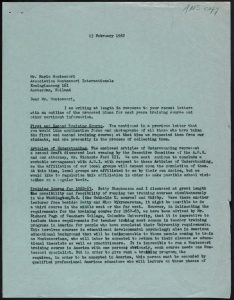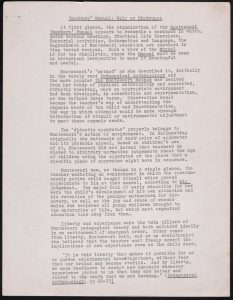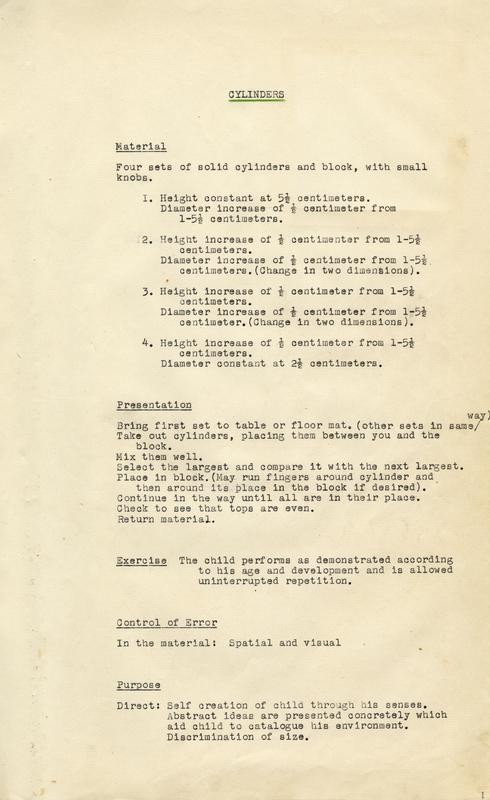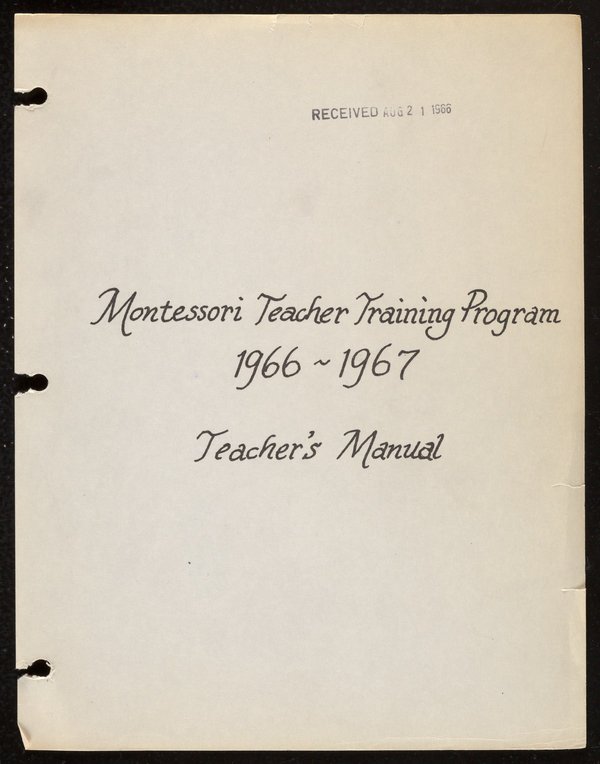The American Montessori Society developed standards for teacher training and certification as well as pedagogical resources to meet Montessori educational needs in the United States. Beginning in the early 1960s, the AMS held teacher training courses across the country to meet the growing demand for Montessori teachers.

Whereas international Montessori training courses were generally open to all who were interested, regardless of their level of education, Nancy McCormick Rambusch, the founder and first president of AMS, envisioned the development of training courses that could be offered for credit to graduate students pursuing degrees in education. In order for the Montessori method to gain acceptance among American educators, Rambusch believed that Montessori training programs needed to meet American professional standards of education, such that they could be accredited by the state.This meant including courses in developmental psychology and American educational theory. The 1962-1963 Montessori Teacher Training Course sponsored by AMS included lectures not only on the theory and practice of the Montessori method of education, but also on American intellectual, political, and philosophical history as it related to educational theory. To listen to recordings of lectures from the 1962-1963 Montessori Teacher Training Course, click here.

The Teachers’ Manual
In the late 1950s and early 1960s, prospective teachers in Montessori teacher training courses created their own manuals as part of their training. These notebooks served as a useful reference for new Montessori teachers as they transitioned to teaching their own classes.
In “A Long Letter to Montessorians in America,” (1963), Mario Montessori explained the origins and purpose of creating the manual during training:
“Dr. Montessori introduced the compilation of the material album by the individual student because by having to do so, his or her attention was forced to focus on every detail of presentation, of aim, age of the child, etc. This forced focusing would not have been the case [if] the book had been handed over to them. It also required an effort and a training in self-discipline which Dr. Montessori considered to be very necessary in a Montessori teacher.”
As the American movement expanded, AMS teacher training courses began printing and distributing the manual. Nancy McCormick Rambusch explains the value of the Teachers’ Manual in “Teachers’ Manual: Help or Hindrance,” (1967).
The creation of a teachers’ manual was an important part of Montessori teacher training. The first Montessori training courses in the United States provided trainees with physical descriptions of the educational materials that they would be using in the classroom. Drawing on the knowledge gained during their training, prospective teachers were tasked with writing an explanation of how to use the materials in the classroom. Montessori training emphasized precision in the actions of the teacher when demonstrating the use of educational materials. The presentation of the material to the student was broken down into short, clear steps. Trainees were taught to eliminate unnecessary movements to avoid confusing the child. To further familiarize themselves with the materials, prospective teachers were required to draw an illustration of the materials. The teacher training notebooks of Edith Cary and Mildred Harford can be viewed online.


